MELBOURNE GRAND ORGAN
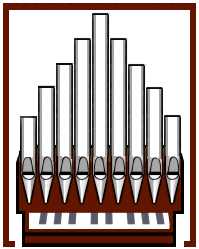
the "grand organ" is a core feature of melbourne's townhall, which is located in the center, near the anglican cathedral. this substantial building, including its entrance, is pretentious - reflecting the city's immense wealth in the 'gold rush' time.
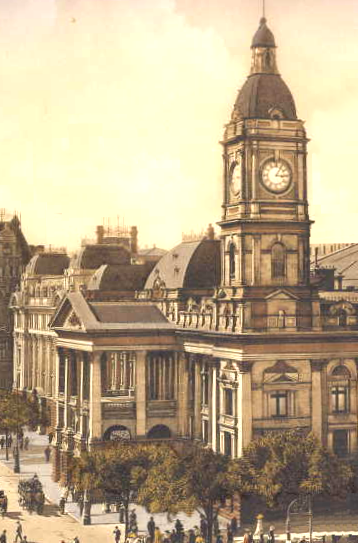
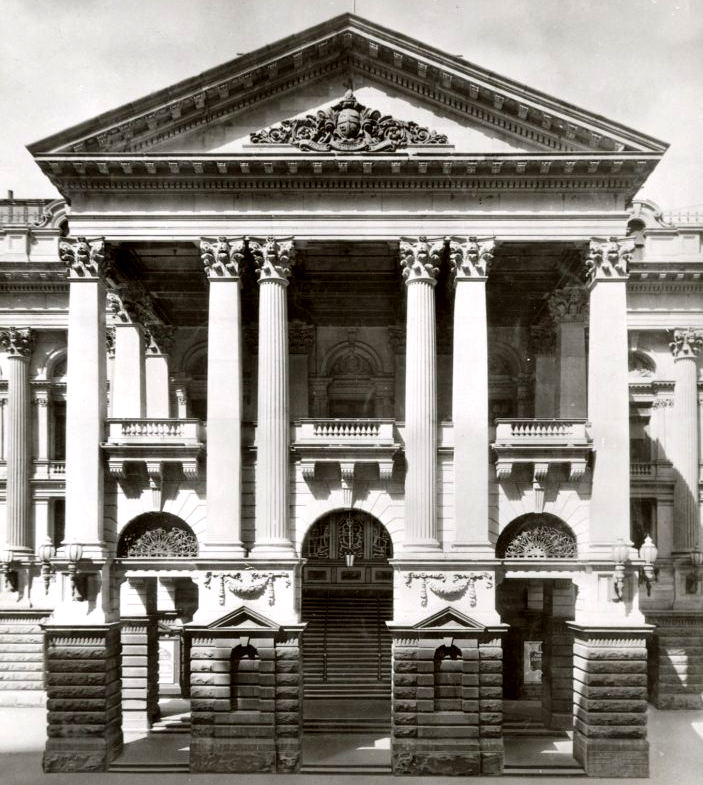
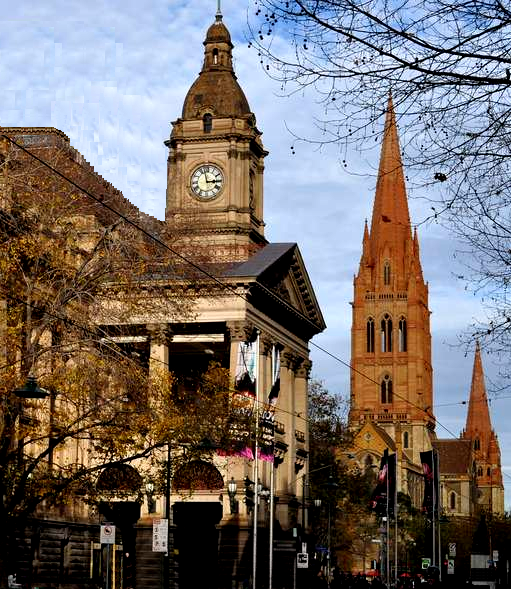
the organ's history
the first organ was installed in 1872, placed in the large central venue of the townhall, where governmental institutions held their meetings, and citizens were guests. it was thoroughly repaired and extended in 1905. this organ was destroyed in 1925 because of a fire in the townhall. after that, a second organ was installed in 1929, a large one with a modern technology. it was regularly used for concerts, several decades, yet the maintenance of this huge instrument was more and more neglected because the pertinent budget was far to small - thus in the mid-1990s the (un-)grand organ became unplayable, sadly so.
yet in 1996 a "town hall organ working committee" was set up, aiming at the restoration of the organ. this could not been realized by australian experts, instead a specialist company in ohio/usa had to do it, which employed 70 craftpeople and artisans. this took almost 5 years and cost 4.5 mio dollars.
in 2001 the city of melbourne was very happy to celebrate the outcome, linked to the centenary of federation celebrations - - the "grand organ" was back lo life, and even 'grander' now!
the organ's look
the following pic's show how the very large organ is placed at the northern side of the venue, and that visitors can sit on the ground floor or the balustrade on the 2nd floor.
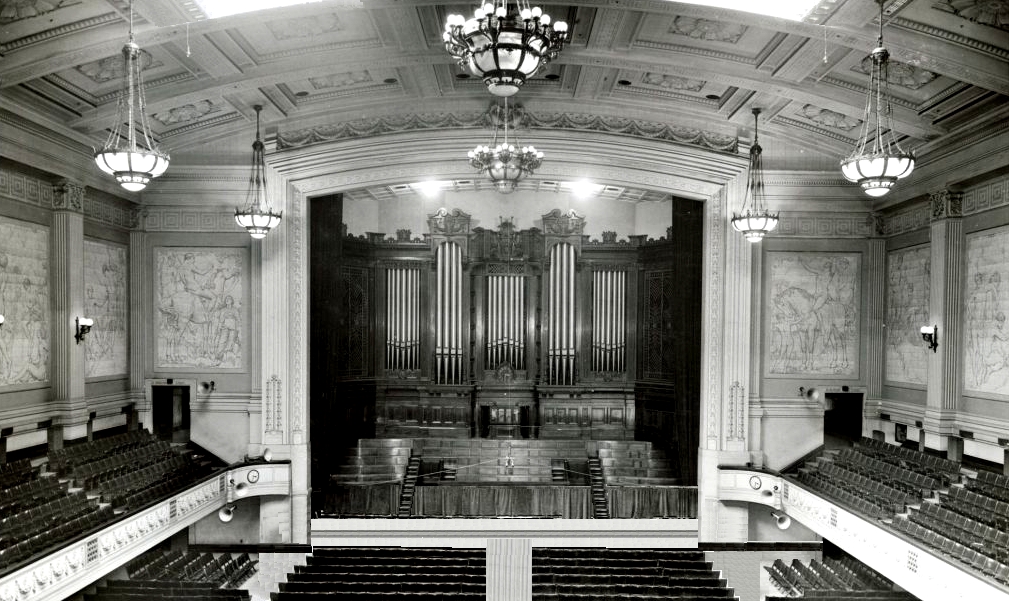
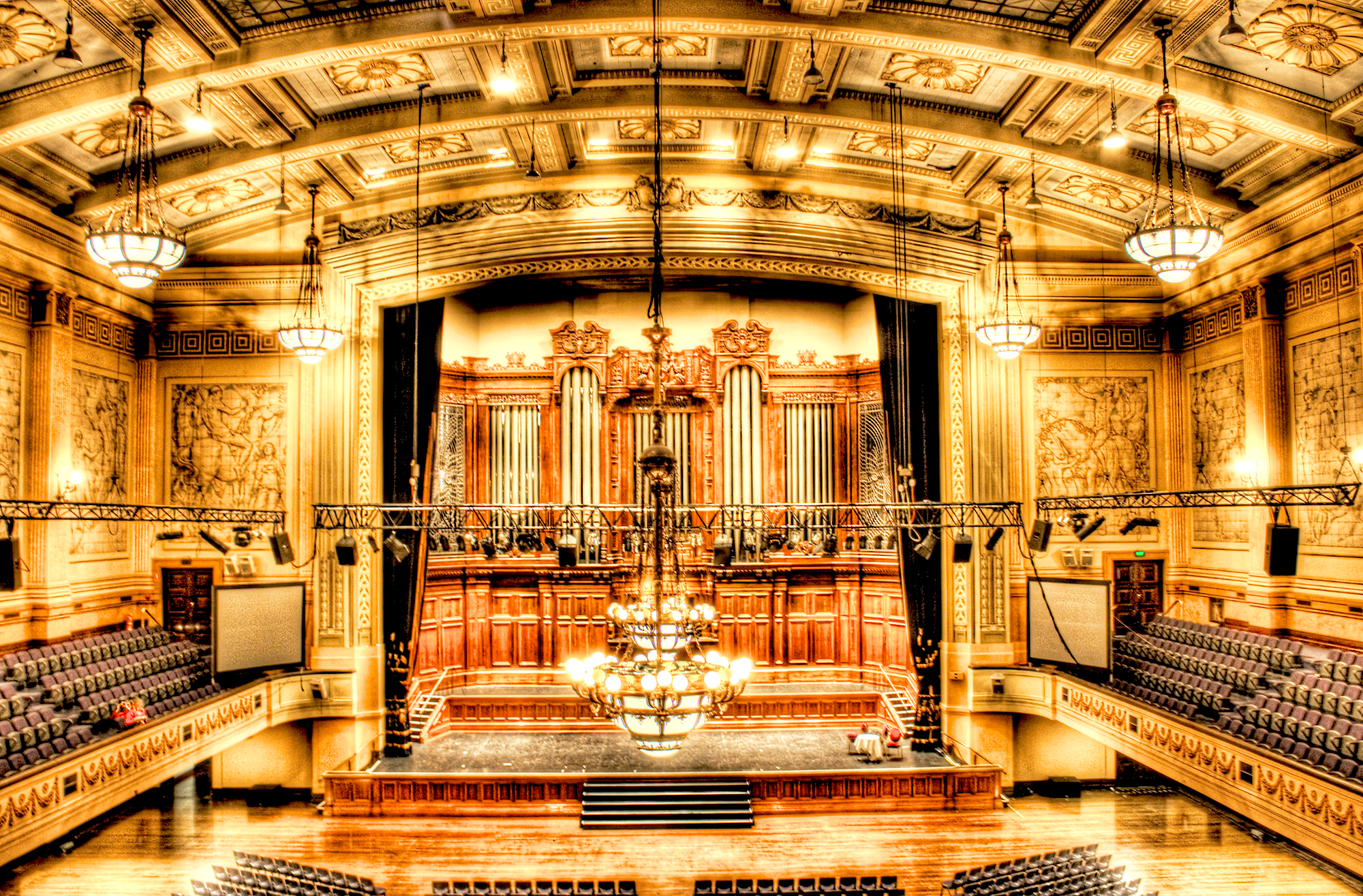
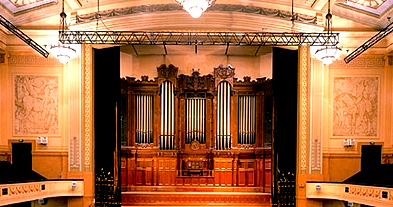
this room is highly decorated, including many wall paintings, which goes back to its function as the central venue of the city government. during the last 10 years a lot of modern lightning facilities have been added.
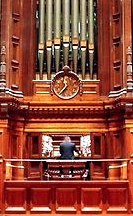
playing this organ
this organ is certainly a "high-tech machine", and only very professional musicians can fully play it.
the console is a keyboards with four (!) manuals, named solo, swell, great, choir. a fifth keybord is to be played with the feet. left and right on the keyboard are very many knobs ("stops"), which are used to shape the sound by steering the pipes.
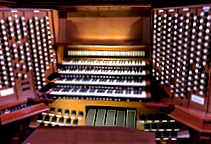
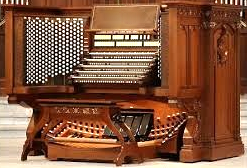
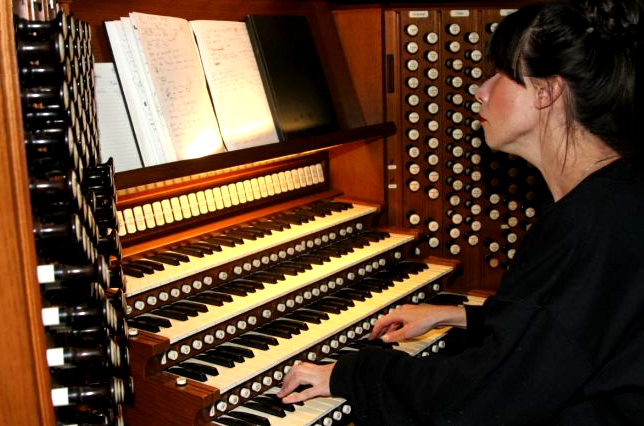
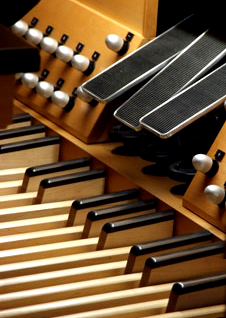
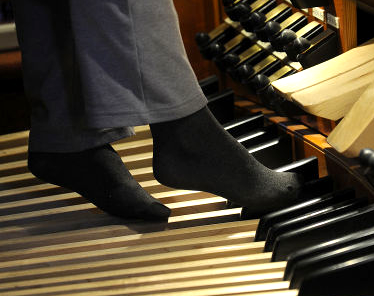
the console is placed high in the middle of the organ - yet the grand organ in melbourne's townhall has a second, fully equipped mobile console positioned in the venue's ground floor. so, when finding a suitable seat one can observe all the actions of the player.
the organ's engineering
technically, organs are based on a set of pipes. these are made with metal or with wood, and they create sound when air under pressure is blown through them. each pipe produces a single pitch. the longer the pipe, the deeper the sound. a pipe's volume and timbre depends on its design and on the air blowing.
here are essential features of melbourne's grand organ: <> altogether it has 9568 pipes <> the largest one is the 'tibia profunda'. the smallest pipe is the top note of the tierce and is 9.3 mm long with a diameter of 11.1 mm <> the organ is blown by two electric motors, 14.9 kilowatts and 11.3 kilowatts <> to steer the tubes, about 480 km of wire and 3000 magnets were needed <> the organ is 10 m high.
other large organs in melbourne
the anglican cathedral st. paul and the catholic cathedral st. patric both have a large organ. st. patric's design is stunning.
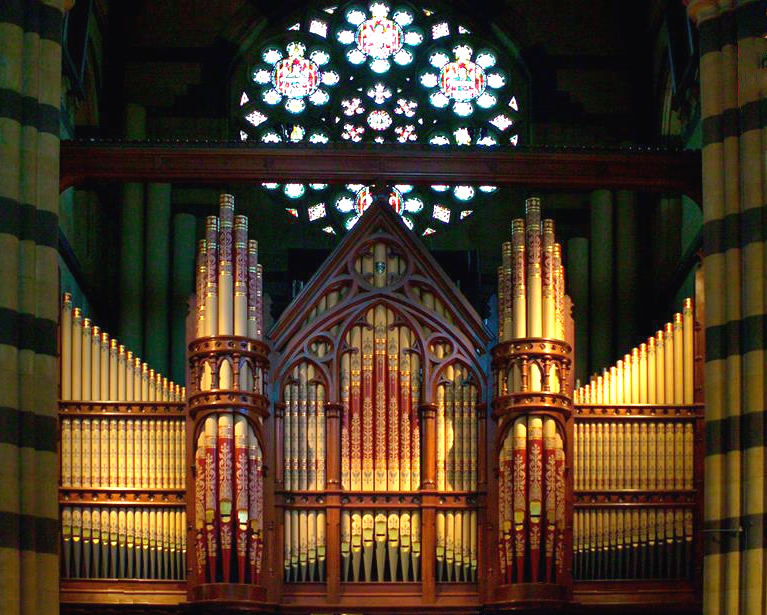
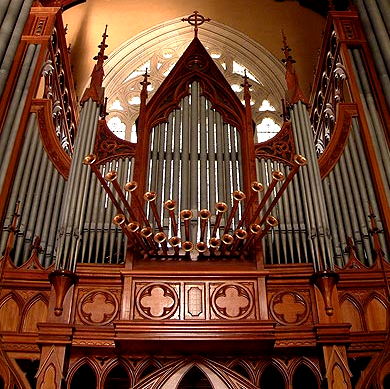
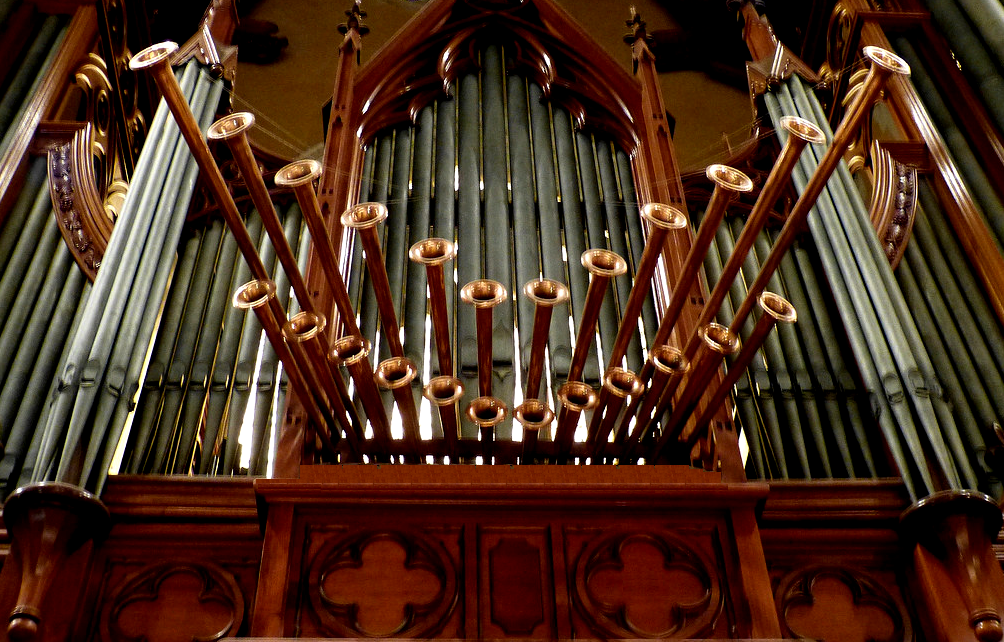
the grand organ's status
the melbourne grand organ certainly is famous, very much so, not because of its size anymore, yet because of its almost perfect music quality since 2001, and the enormous variety of sound patterns it can provide.

organ music composers
there are many many many, given that the organ is pretty common in churches, synagoges, concert halls and so on for almost thousand years. one name is above all though, johann sebastian bach (1685-1750), the most famous composer who was also a professional organist. for the author of this essay his composition "toccata und fuge d-moll (bwv 565)" is the most impressive one, a really fabulous piece of organ music!
to sum up - - do people enjoy concerts on the "grand organ"? yes, very much so - one may feel almost jingled while hearing it, especially when the organ is on full power... the musician can create about every sound, from a delicate whistle to deafening thunder - - what a mighty, and certainly moving, encounter!
